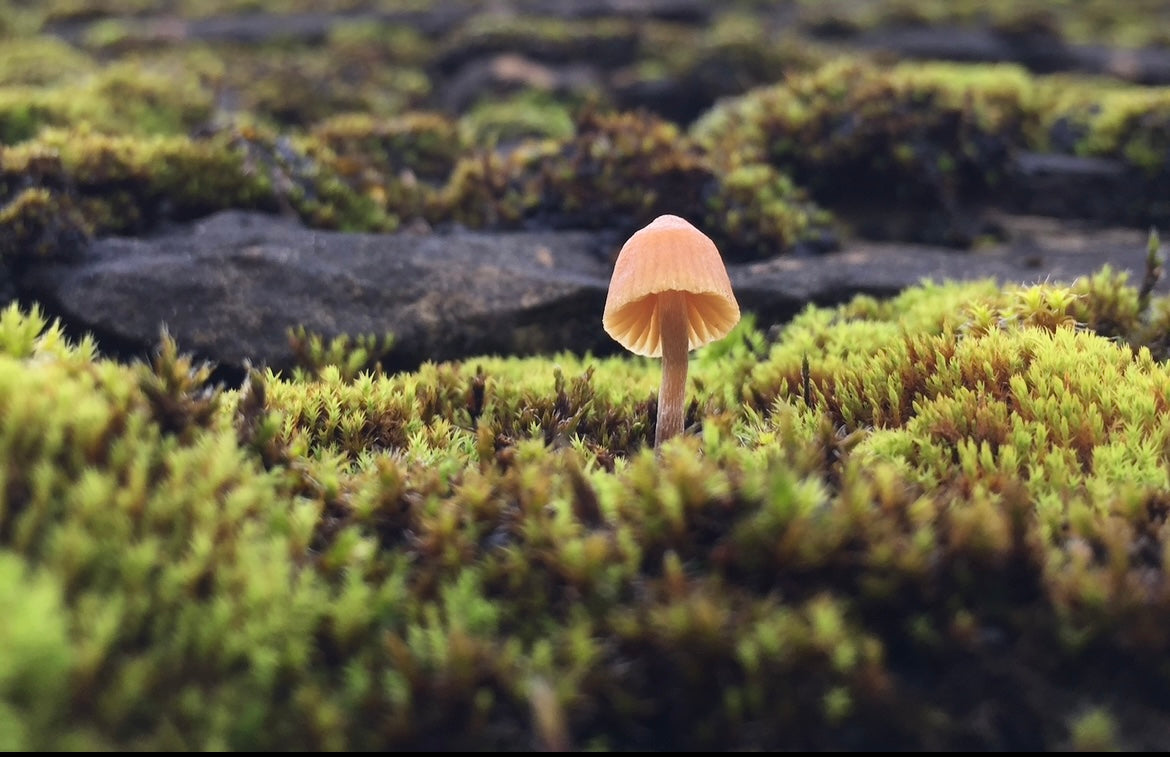Garden fungi

While most of the garden has been slowly winding down, other areas have been seeing some intriguing activity. Fungi! From puffballs in the meadow, to shaggy ink caps on the lawn, and tiny orange bonnets on the garden wall (pictured), it seems that the damp summer and wet weather in recent weeks has provided perfect growing conditions for these enigmatic organisms.
Autumn, with its damp and cool conditions, is the peak season for fungal activity where they play an essential role in the ecosystem, acting as decomposers and forming mutualistic relationships with plants.
In the UK, there are thought to be fifteen thousand species and globally it’s thought that 90% still remain undiscovered. Inhabiting a broad range of environments, from woodlands to grasslands, they can be found growing on trees, leaf litter, and even parasitising other fungi.
Some we don’t want in our gardens. Honey Fungus is one many gardeners fear, its sinister underground bootlace-like rhizomorphs attacking and killing many woody shrubs and perennials. On the positive side, fungi contribute in a number of ways, breaking down dead organic matter and recycling nutrients. They're crucial for healthy soils and play a role in supporting plant growth, so much so that products such as ‘Root Grow’ are available for gardeners to apply around the roots of plants during planting.
Some species also have medicinal properties, and some are a source of food, like the chanterelles, Boletus, or the humble field mushroom. So abundant and varied are they that we never quite know what we’ll find next as we walk around the Genus lawns and borders.







